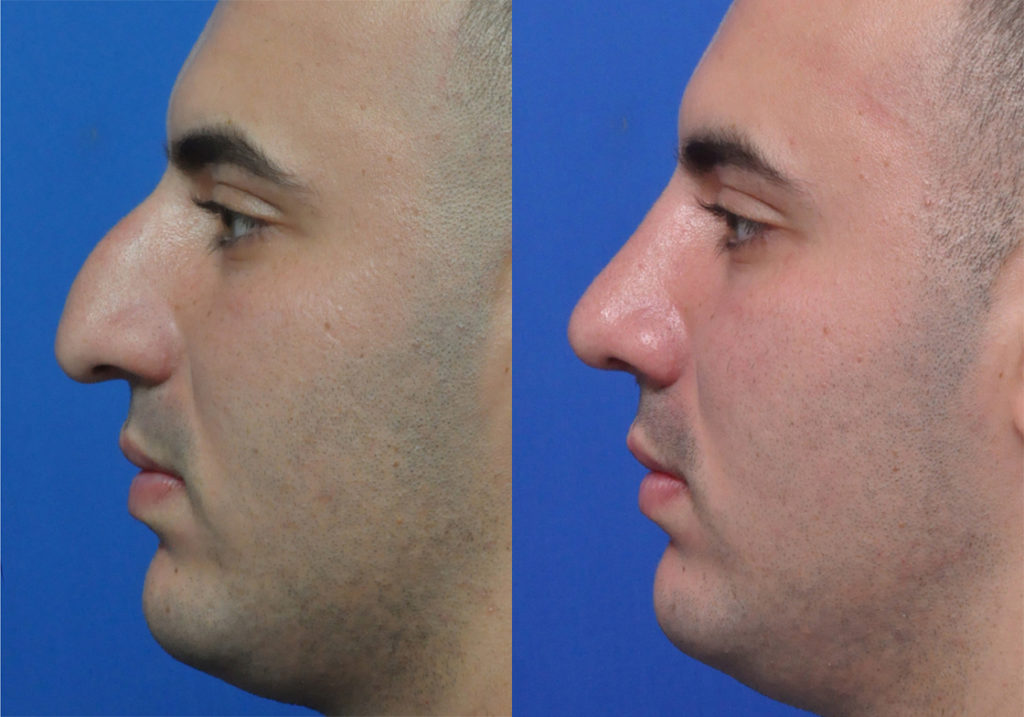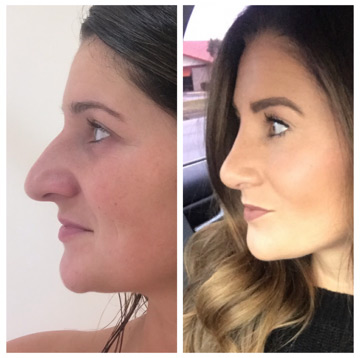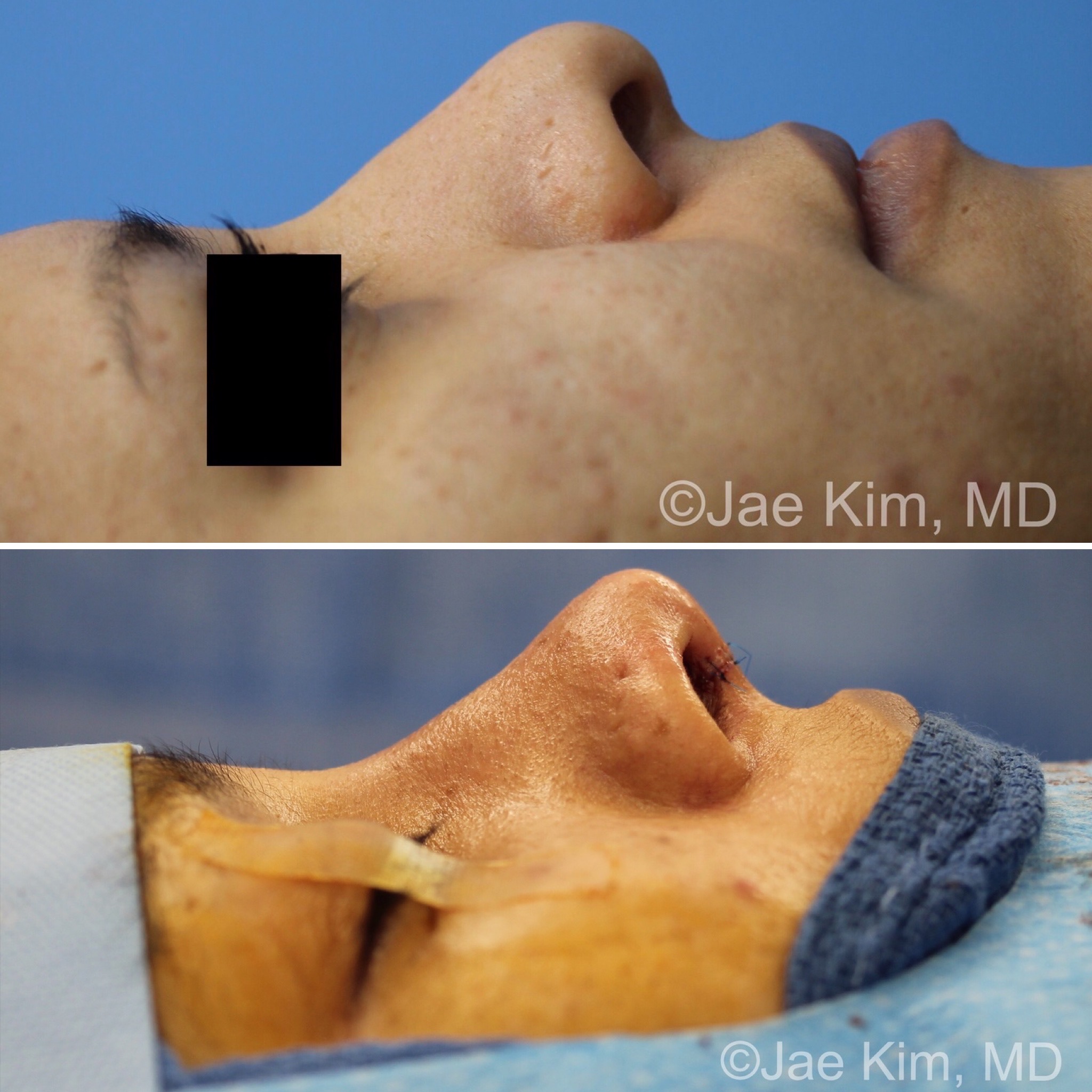The 7-Second Trick For Rhinoplasty Surgeon Austin
Table of ContentsGet This Report on Rhinoplasty Austin Tx5 Simple Techniques For Rhinoplasty Surgeon AustinGetting My Rhinoplasty Surgeon Austin To Work
Recovery by secondary intent (re-epithelialisation) occurs even when the injury extends to the nasal bone. Although the rate of healing depends upon the patient's wound-healing capacity, nasal injuries determining up to 10 mm in diameter generally recover in at 4-weeks post-operative. However, one potential, but unusual, issue of this nasal correction method is the development of a median canthal web, which can be remedied with 2 (2) opposing Z-plasties, technique which relieves the injuring stress exerted by the scar tissue's contracture, its shape, and location on the nose.e. on the left nostril. Nose job: A divided area style utilized in Mohs surgical treatment for excising malignant sores before nasal reconstruction. (b) Nasal dorsum and lateral nasal wall problem The size of the nasal defect (injury) took place, in either the dorsum or the lateral wall, or both, figures out the reconstructive skin-flap method relevant to the matching aesthetic nasal subunits.


A wound in the lateral nasal wall that is greater than 15 mm in diameter can also be remedied with a superiorly based, nasolabial-flap, which is especially suited for correcting distal flaws that lay amongst the convexities of the nasal suggestion and the alar lobule. The nasolabial flap can remedy defects that understand the distal two-thirds of the nose, if there is a supply of skin adequate for building the base of the flap pedicle; and the donor sites can not be closed primarily.
Nasal defects involving either the bone or the cartilage of the lateral nose are best managed with totally free grafts of flat septal bone and of cartilage. Small flaws of the nasal dorsum can be covered with cartilage grafts gathered from either the septum or the concha of the ear. The correction of large-area flaws of the nasal dorsum needs the steady assistance of a bone graft attached either with a lag screw or with a low-profile plate.
How Rhinoplasty Surgeon Austin can Save You Time, Stress, and Money.

( c) Nasal tip defect The width of the human nasal-tip ranges 2030 mm; the typical width of the nasal tip, measured between the two alar lobules, is roughly 25 mm. A nasal skin flaw of less than 15 mm in diameter can be managed with a bilobed flap; the surgeon trims the edges of the injury (flaw) to match its measurements (length, width, depth) to the natural curve at the border of the nasal idea.
If the nasal-tip wound is higher than 15 mm in diameter, the surgeon expands it to comprehend the whole visual subunit impacted by the flaw, and the restoration of the nasal subunit finished with a forehead flap. austin rhinopasty surgeon. If the nasal-tip flaw likewise includes the nasal dorsum, a forehead flap is suggested for reconstructing the entire nasal-tip and dorsum.
The defect of an alar dome, which retains appropriate structural support-tripod setup, can be remedied with an onlay graft harvested either from the nasal septum or from the conchal cartilage of an ear. The surgeon forms the cartilage graft into the shape of a shieldits largest margins end up being the replacement alar domes.
Defects of the lateral crura can be fixed with a flat strut of formed cartilage, however, if the assistance of the medial crura is missing, then a columella strut must be inserted, and connected at the level of the anterior nasal spinal column. If a strut of nasal-septum cartilage shows too weak, then a rib More Info cartilage strut can be applied to supply the adequate nasal assistance; afterwards, the strut is covered with onlay grafts. austin rhinopasty surgeon.
The surgeon attaches them to the anterior nasal spinal column, and to each side of the (pear-shaped) pyriform aperture; the remainder of the collected conchal cartilage is applied as onlay grafts to augment the nasal idea. A nasal-tip lining defect is unusual, since of its midline place; yet, the restoration is with an anteriorly based septal mucosal flap that is turned into location to provide adequate protection and correction of the nasal lining defect.
Rhinoplasty Austin Tx for Beginners

Nasal skin defects can be fixed with a medially based bilobed flap, which is emplaced to offer appropriate skin protection for wounds restricted to the alar lobule. If the entire lobule is missing, it might be required to leave the second-lobe donor-site wound partially open; it will close at 24 weeks post-operative; afterwards, the scar can be modified.